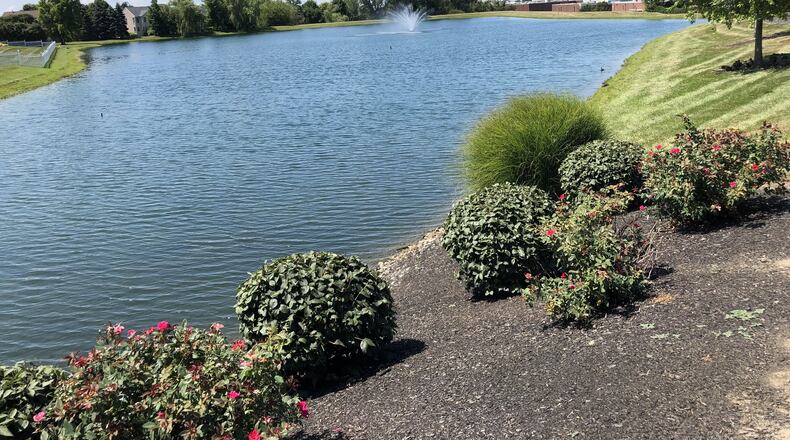In addition to this dam, in the Settlers Walk development in Springboro, state inspections have flagged dams on Spring Lake in Huber Heights, Clark Lake in Clark County, Cedarville Upground Reservoir in Greene County and Grand Lake St. Mary’s West in Mercer County.
The state is also working toward solutions to problems with dams on Echo Lake, Franz Pond, Swift Run Lake dams in Miami County, both dams at Paradise Lakes in Preble County and the Lilley Lake Dam in Warren County.
Most of the dams are located on small lakes near residential areas.
Of the 1,420 dams in Ohio, 124 are in poor or unsatisfactory condition, according to an Associated Press investigation.
Nationwide, the AP review of federal data and reports obtained under state open records laws identified 1,688 high-hazard dams rated in poor or unsatisfactory condition as of last year in 44 states and Puerto Rico.
RELATED: State sues over safety of dam near Dorothy Lane Market
“There are thousands of people in this country that are living downstream from dams that are probably considered deficient, given current safety standards,” said Mark Ogden, a former Ohio dam safety official who is now a technical specialist with the Association of State Dam Safety Officials.
The association estimates it would take more than $70 billion to repair and modernize the nation’s more than 90,000 dams. But unlike much other infrastructure, most U.S. dams are privately owned. That makes it difficult for regulators to require improvements from operators who are unable or unwilling to pay the steep costs.
“Most people have no clue about the vulnerabilities when they live downstream from these private dams,” said Craig Fugate, a former administrator at the Federal Emergency Management Agency told the Associated Press. “When they fail, they don’t fail with warning. They just fail, and suddenly you can find yourself in a situation where you have a wall of water and debris racing toward your house with very little time, if any, to get out.”
In July, the Kinsman Lake Dam in Trumbull County failed after more than 6 inches of rain fell within a few hours in the area, according to the Ohio Department of Natural Resources.
More than 60 people were evacuated and 20 family homes were damaged, according to reports.
While targeted for enforcement, none of the area dams are rated as high risks with the potential for a loss of life if the dam fails.
Owners of state-regulated dams are required to monitor, maintain, and operate them safely.
MORE: Trotwood creates plan after dam deemed potential hazard
Problems vary and result in lawsuits when the state is otherwise unable to get the owners to comply with state regulations through “repair, removal, or modification,” according to the state response to questions for this report.
“Those deficiencies may be due to the age of the dam, failure to maintain the dam, a change in classification of the dam that requires a change in design requirements, designing/constructing the dam improperly from the start, or a combination of these factors.”
According to the state:
• The dam at Clark Lake has undergone “some maintenance” and is “slated for assessment in 2020.”
An engineer has been hired to plan removal of the problem dam at the Cedarville Upground Reservoir.
• At Grand Lake St. Mary’s West, the condition has been upped to “fair” following some maintenance, with an engineer working on designs.
• The owners of the three problem dams in Miami County have hired engineers to bring them into compliance.
• Construction is to begin in the spring on the deficient Paradlise Lake dams, while the Lilley Lake Dam is “slated for enforcement,” according to the Ohio Department of Natural Resources.
• Repairs to the Spring Lake Dam, on a tributary to the Great Miami River near Taylorsville and Harshmanville roads in Huber Heights, are beginning next week.
• On Friday, lawyers for the state, Settlers Walk Homeowners Association and MCS Land Development were to make final submissions to Judge Robert Peeler in the lawsuit over problems with the Remick Lake Dam.
"The owners of this dam have shrugged off the state's warnings for over a decade at the expense of the public's safety," Attorney General Dave Yost said in a release issued after the lawsuit was filed in August."It's well past time for them to accept responsibility of this hazard and make the necessary repairs."
Settlers Walk is home to hundreds of homeowners and the location of a shopping center anchored by a Dorothy Lane Market.
In the lawsuit, the state is asking Peeler to identify the owners responsible for the dam, an issue with about 4 percent of regulated dams in Ohio, according to the state.
“Most of these owners agree that they are co-owners and work together to comply with dam safety requirements. Occasionally, the ownership of a dam is unclear or in dispute. In those cases, the parties may reach an agreement on ownership of the dam or have that ownership declared by a court,” according to the Ohio Department of Natural Resources.
Peeler is expected to decide next week.
About the Author


